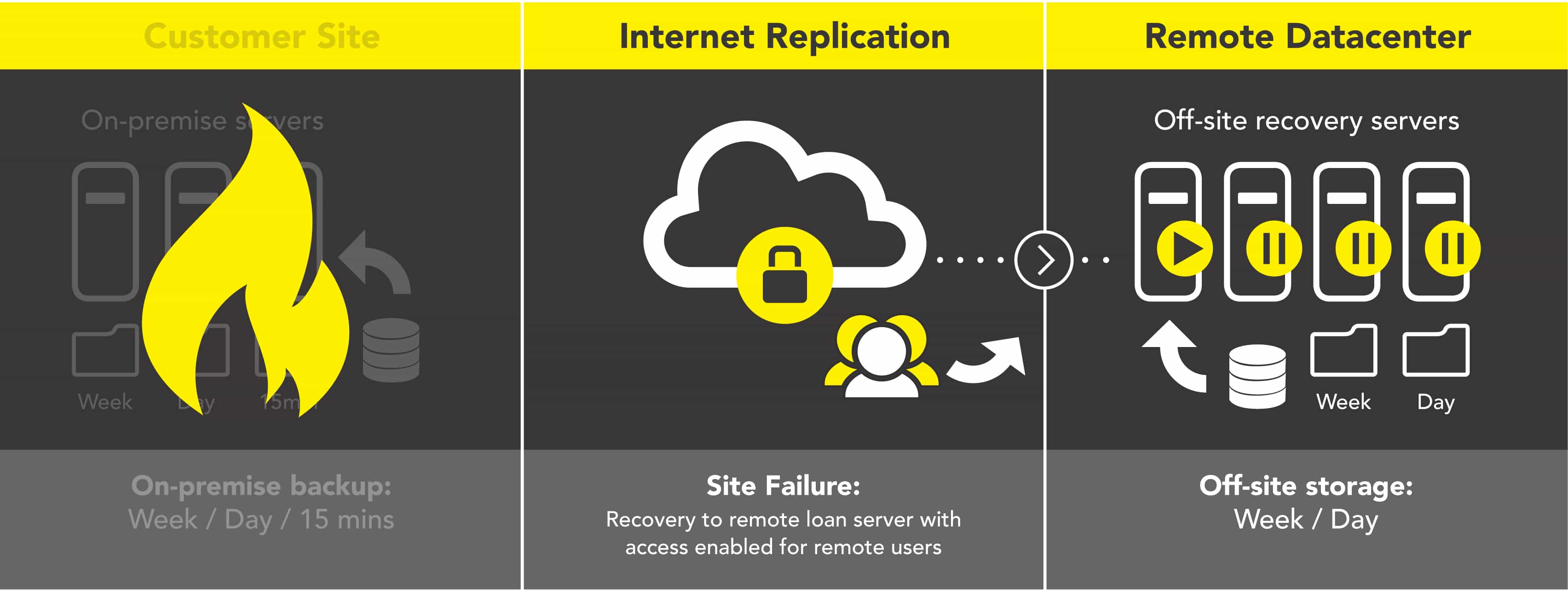Server breakdown, fire, security breaches and simple human error all have the potential to suddenly disrupt access to data services and bring day-to-day operations to an unexpected halt. Our Disaster Recovery and Backup Service, or DRBS for short, provides robust and certain protection in crises such as these.
We discuss in detail with our clients their current recovery capability and their recovery objectives, which typically are very different. Having identified a need for fast recovery, we then implement the solution for the servers and the services considered mission critical, automatically replicating them both on-site, and off-site to a secure data center in order to provide a double level of protection and ensuring the shortest possible recovery times if disaster hits. It’s an automated, fully managed and extremely scalable solution that our clients rely on every day.
How Disaster Recovery Backup Service works
Our Disaster Recovery Backup Service, protects businesses against data, server and even complete site failure, giving them peace of mind that they can restore normal operations in a matter of hours, rather than days. Here’s how it works:
Figure 1: Data and/or server failure.
Image backups of selected servers are made as frequently as every 15 minutes to an onsite storage device, enabling local data and server recovery in minutes. A daily image is also created and replicated to the data center with a minimum 30-day retention period. This enables file and folder restorations, plus full recovery in the event of a disaster such as fire and theft, giving staff swift access to data, come what may.
Figure 2: Server or Site Failure.
In case of complete server or site failure, our DRBS Extended Recovery Option gets to work, providing fast recovery via local loan servers or remote access to servers hosted at the data center.
Figure 3: Site Failure.
In the worst scenario of complete site failure, our Extended Recovery Option allows staff to remotely connect to applications and data stored on loan servers at the data center. This enables them to work from home or elsewhere while the customers’ site is unusable, protecting our clients’ business continuity, no matter what.



